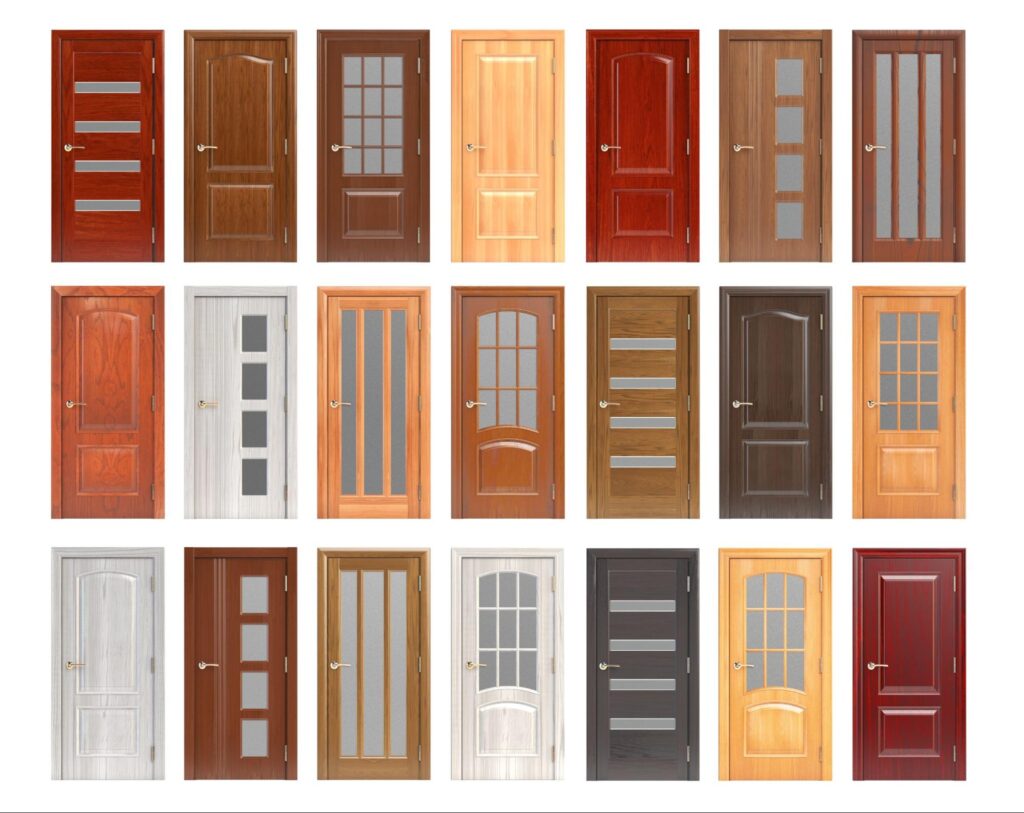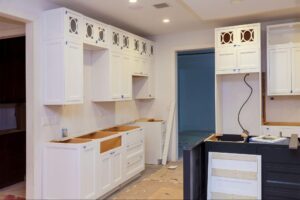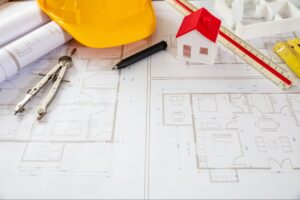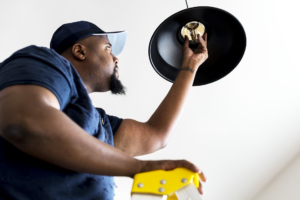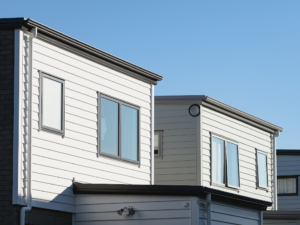Replacement doors can fit into an old frame, but the process depends on factors like frame condition, door size, and hardware compatibility. A well-maintained frame allows for a seamless installation with minor adjustments, while structural damage or misalignment may require extra modifications. Proper measurements, hinge placement, and material considerations ensure the new door functions correctly without compromising security or insulation. Sometimes, a full frame replacement becomes necessary, significantly if the existing structure is warped or deteriorating. Understanding these factors helps determine whether a new door can work within an old frame or if a more extensive upgrade is needed.
Replacement Doors and Old Frames: Are They Compatible?
Replacement doors can fit into an old frame, but compatibility depends on several factors, including frame condition, door size, and alignment. A sturdy, undamaged frame allows for a seamless installation, while a warped or deteriorating frame can create problems. Misalignment can lead to operational issues, making it difficult to open or close the door properly. Checking for compatibility before installation prevents costly adjustments and ensures long-term functionality.
Why Compatibility Matters
A replacement door that doesn’t fit properly in an old frame can cause security, energy efficiency, and durability issues. Ensuring the door and framework together helps avoid costly repairs and frequent maintenance. A well-fitted door provides better insulation, improves home security, and enhances curb appeal. Ignoring compatibility can lead to long-term problems requiring a complete frame replacement.
Proper Seal and Insulation
A misaligned door creates gaps that allow drafts and moisture to enter. Poor insulation leads to higher energy bills and reduces indoor comfort. An adequately fitted door maintains consistent temperatures by preventing air leaks. Checking for a secure seal helps improve energy efficiency and protects against weather-related damage.
Smooth Operation
A door that sticks, drags, or won’t latch properly becomes frustrating. Poor alignment causes unnecessary strain on hinges, leading to premature wear. A door that fits correctly opens and closes effortlessly without resistance. Ensuring compatibility prevents daily inconveniences and extends the door’s lifespan.
Structural Integrity
An old frame with damage or warping weakens the door’s support. A misaligned installation stresses the frame, leading to cracks or instability over time. A secure, adequately fitted door distributes weight evenly, reducing structural strain. Reinforcing or replacing the frame when necessary ensures long-term stability and security.
Checking Replacement Doors Compatibility With Old Frames
Ensuring a replacement door fits an old frame requires careful size, alignment, and structural integrity assessment. A poorly matched door can lead to air leaks, security risks, and operational problems. Checking key factors before installation helps avoid unnecessary adjustments and ensures a secure, long-lasting fit.
Measure the Frame Accurately
Incorrect measurements can lead to gaps, misalignment, or excessive trimming. Checking the existing frame’s height, width, and depth ensures the new door will fit properly. Precise measurements also prevent installation issues and reduce the risk of air leaks or poor insulation.
Inspect the Frame for Damage
Cracks, warping, or rot in the frame can affect the stability of the new door. A weak or deteriorated frame may require repairs or reinforcement before installation. Fixing structural issues beforehand prevents long-term damage and ensures the door operates smoothly.
Check Hinge and Hardware Compatibility
Hinges and locks from the old frame may not align with the new door. Adjustments or replacements may be necessary to ensure smooth operation and security. Testing the hardware before installation avoids misalignment and unnecessary modifications.
Ensure Proper Clearance and Fit
A door that is too tight or too loose can cause operational issues. Checking the clearance around the edges ensures the door swings open and closes without obstruction. Proper alignment prevents unnecessary wear on hinges and prolongs the door’s lifespan.
Replacement Doors: Factors That Affect Fit and Installation
A replacement door must fit correctly in an existing frame to ensure smooth operation and long-term durability. Poor alignment, sizing, or hardware mismatches can lead to security risks and energy inefficiency. Checking key factors before installation prevents costly adjustments and ensures the door functions as expected. A well-fitted door enhances insulation, provides better security, and reduces maintenance needs.
Frame Condition and Structural Integrity
A solid frame supports the new door without requiring excessive modifications. Cracks, warping, or rot in the frame weaken its ability to hold the door securely. Fixing damage before installation ensures stability and prevents alignment issues. A reinforced frame helps extend the door’s lifespan and the surrounding structure.
Door Size and Adjustments Needed
A replacement door that is too large or too small for the frame causes operational issues. Trimming may be necessary, but excessive cutting can weaken the door’s structure. Measuring accurately before purchasing prevents unnecessary modifications. A properly sized door fits securely and functions without resistance.
Material and Weight Considerations
A heavier door may require stronger hinges and additional support, while a lightweight door might not provide the same level of insulation or durability. Choosing a material that matches the frame’s capacity ensures proper functionality. The right balance of weight and strength prevents strain on hinges and improves long-term performance.
Replacement Doors: Steps for Installing a New Door in an Old Frame
Installing a replacement door in an old frame requires careful preparation to ensure a secure and functional fit. A poorly installed door can lead to alignment issues, air leaks, and difficulty opening or closing. Following the right steps helps prevent unnecessary adjustments and ensures smooth operation. Proper installation enhances security, improves insulation, and extends the door’s lifespan.
Measuring and Preparing the Frame
Accurate measurements prevent installation problems and ensure the new door fits properly. Checking the frame for height, width, and depth helps identify any adjustments needed before installation. A level surface ensures the door will align correctly and function without resistance. Cleaning and repairing any damage in the frame creates a stable foundation for the new door.
Choosing the Right Door for the Frame
A door that matches the existing frame in size, material, and weight ensures a secure fit. A heavier door may require reinforced hinges, while a lightweight option might lack durability. Checking the door’s thickness and compatibility with existing hardware prevents installation issues. Selecting a door designed for the frame’s dimensions reduces the need for modifications.
Aligning Hinges and Hardware
Hinges must be placed correctly to prevent the door from sagging or sticking. Checking the existing hinge placement helps determine if adjustments are needed. Installing the hinges securely ensures the door swings smoothly and latches properly. Proper alignment of locks and handles improves functionality and security.
Testing Fit and Making Adjustments
Placing the door in the frame before securing it helps identify gaps or misalignment. Minor trimming may be necessary to achieve a perfect fit without forcing the door into place. Checking that the door swings open and closes without resistance ensures smooth operation. Sealing gaps and securing hardware correctly completes the installation for long-term stability.
Replacement Doors vs. Full Frame Replacement
Choosing between replacement doors and a full frame replacement depends on the condition of the existing frame, alignment, and long-term durability. A solid and undamaged frame allows for a simple door replacement, preserving the structure while improving functionality. However, a weakened, warped, or deteriorated frame requires a complete replacement to prevent security risks and operational issues. Evaluating frame stability, energy efficiency, and overall fit helps determine the best option for long-lasting performance.
Signs You Need Only Replacement Doors
A worn or damaged door does not always mean the entire frame needs replacing. A solid, structurally sound frame can support a new door without major repairs. Checking for specific signs helps determine if a replacement door alone is enough to restore functionality. Keeping the existing frame can save time, reduce costs, and simplify installation.
The Frame is Structurally Sound
A stable and undamaged frame can support a new door without any issues. Cracks, warping, or rot in the frame often require more extensive repairs. A secure frame ensures the door will fit properly and function as expected. Checking for stability before replacing the door prevents future alignment problems.
The Door is Warped or Damaged
A cracked, warped, or deteriorated door can be replaced without removing the frame. Exposure to moisture, temperature changes, and daily use can cause doors to weaken. Swelling or shrinking may affect how the door operates, making replacement necessary. A properly sized new door restores smooth operation and improves insulation.
Hardware and Hinges Still Align Properly
A door that no longer closes securely but has well-placed hinges and functioning locks may only need replacement. Misalignment caused by door swelling does not always mean the frame is damaged. Keeping the frame and only replacing the door allows existing hardware to be reused. Checking hinge placement and lock functionality helps determine if a new frame is necessary.
Minimal Drafts or Energy Loss
Gaps between the door and frame can lead to drafts and energy inefficiency, but minor issues can be fixed with a new door. A door that no longer seals properly might be the problem rather than the frame. Weatherstripping or a better-fitting door improves insulation without requiring frame replacement. Replacing only the door prevents unnecessary expenses while improving energy efficiency.
Signs You Need Full Frame Replacement
Although keeping the old frame is possible in many situations, some conditions require a complete frame replacement. A weak, damaged, or deteriorating frame compromises the stability and performance of any new door. Ignoring these issues can lead to poor security, energy loss, and ongoing maintenance problems. Identifying the signs of structural failure helps determine when a full replacement is necessary.
The Frame is Warped, Cracked, or Rotten
A frame with visible cracks, bending, or decay cannot properly support a new door. Wood rot and moisture damage weaken the structure, causing further deterioration. Warped frames lead to alignment problems, making it difficult for the door to open or close. Replacing the entire frame prevents recurring issues and ensures a secure fit.
The Door and Frame No Longer Align
Gaps between the door and frame indicate shifting or settling, affecting overall functionality. A misaligned frame causes the door to stick, drag, or fail to close completely. Adjustments may temporarily fix the issue, but ongoing alignment problems require a new frame. Replacing both the door and frame restores proper fit and operation.
Severe Drafts and Energy Loss
A damaged frame with large gaps allows air to pass through, increasing heating and cooling costs. Weatherstripping may help, but a compromised frame will continue to cause energy inefficiency. A well-fitted new frame eliminates drafts and improves insulation. Upgrading both the frame and door enhances overall energy efficiency.
Structural Damage from Water, Pests, or Settling
Long-term exposure to moisture, termites, or foundation shifts weakens the frame beyond repair. Signs of infestation, water stains, or uneven settling indicate the need for a complete replacement. A damaged frame poses security risks and reduces the lifespan of any new door. Replacing the frame ensures long-term durability and prevents further structural issues.
Replacement Doors Protect the Home Without a Full Overhaul
A well-fitted replacement door enhances security, improves insulation, and restores functionality without requiring a complete frame replacement. Keeping the existing frame intact saves time and costs while maintaining structural stability. A thorough assessment of the frame’s condition helps determine whether a simple door replacement or a complete upgrade is necessary. Choosing the right option ensures long-term durability and a secure, energy-efficient home.
Explore more expert tips and insights on home improvement and renovations by visiting our Build All Construction Inc. blog—your trusted resource for turning ideas into reality!

